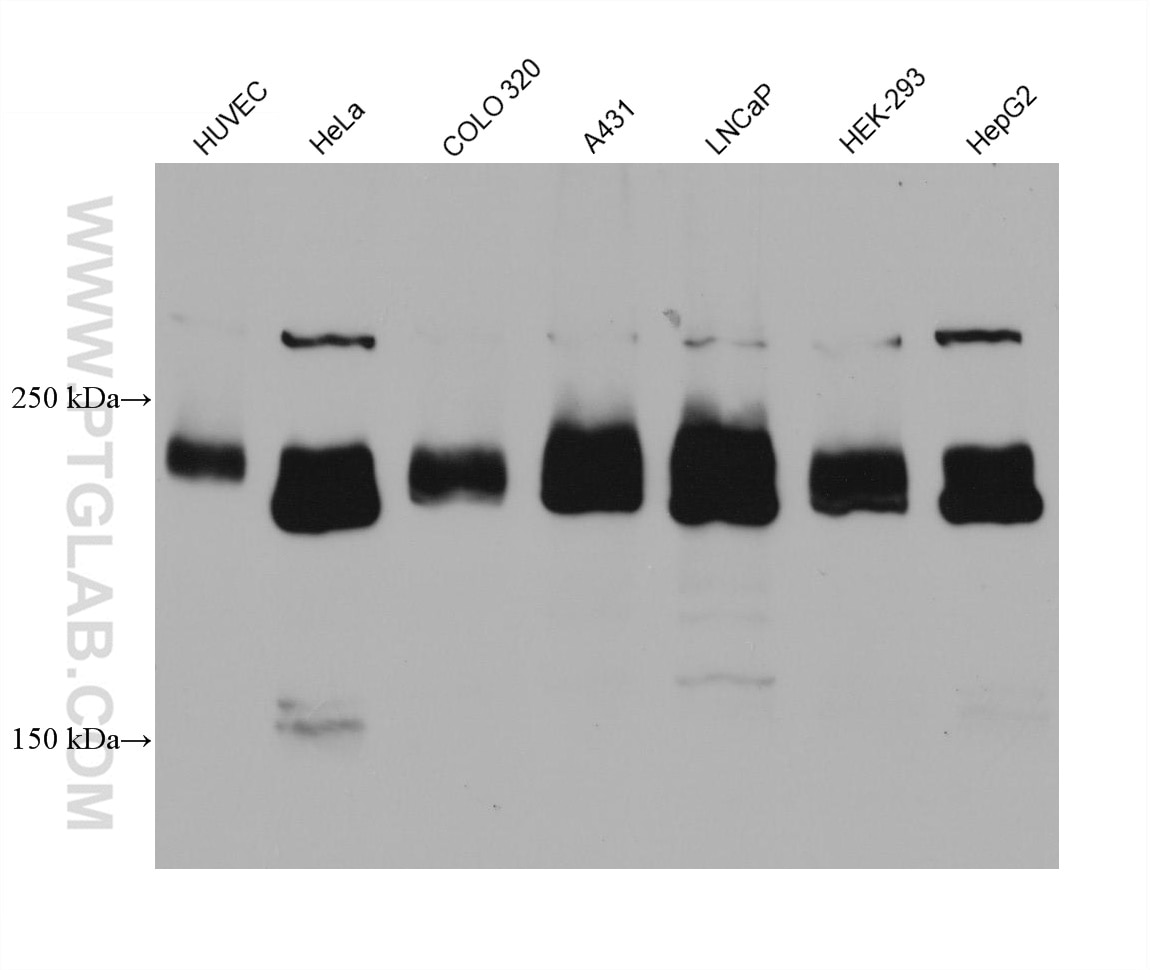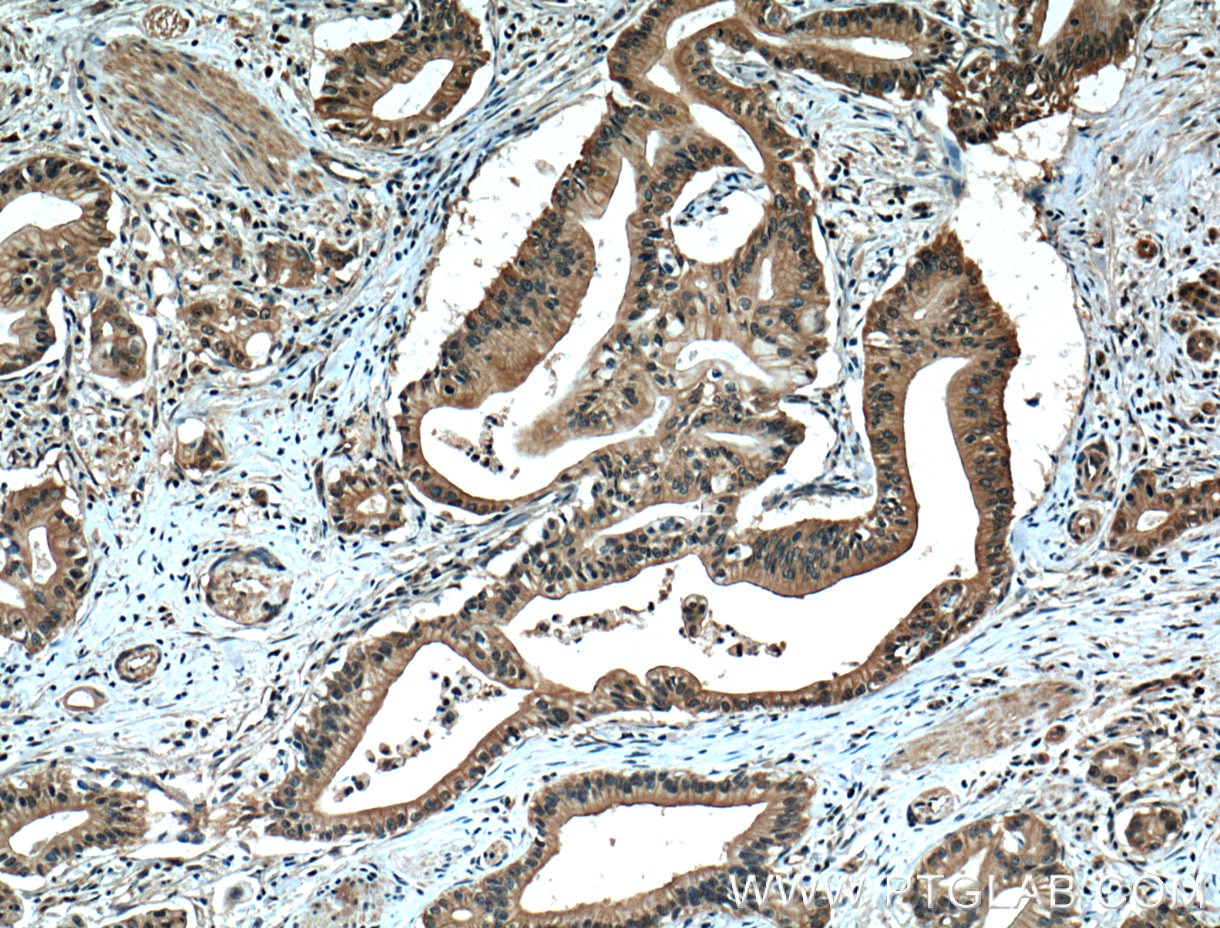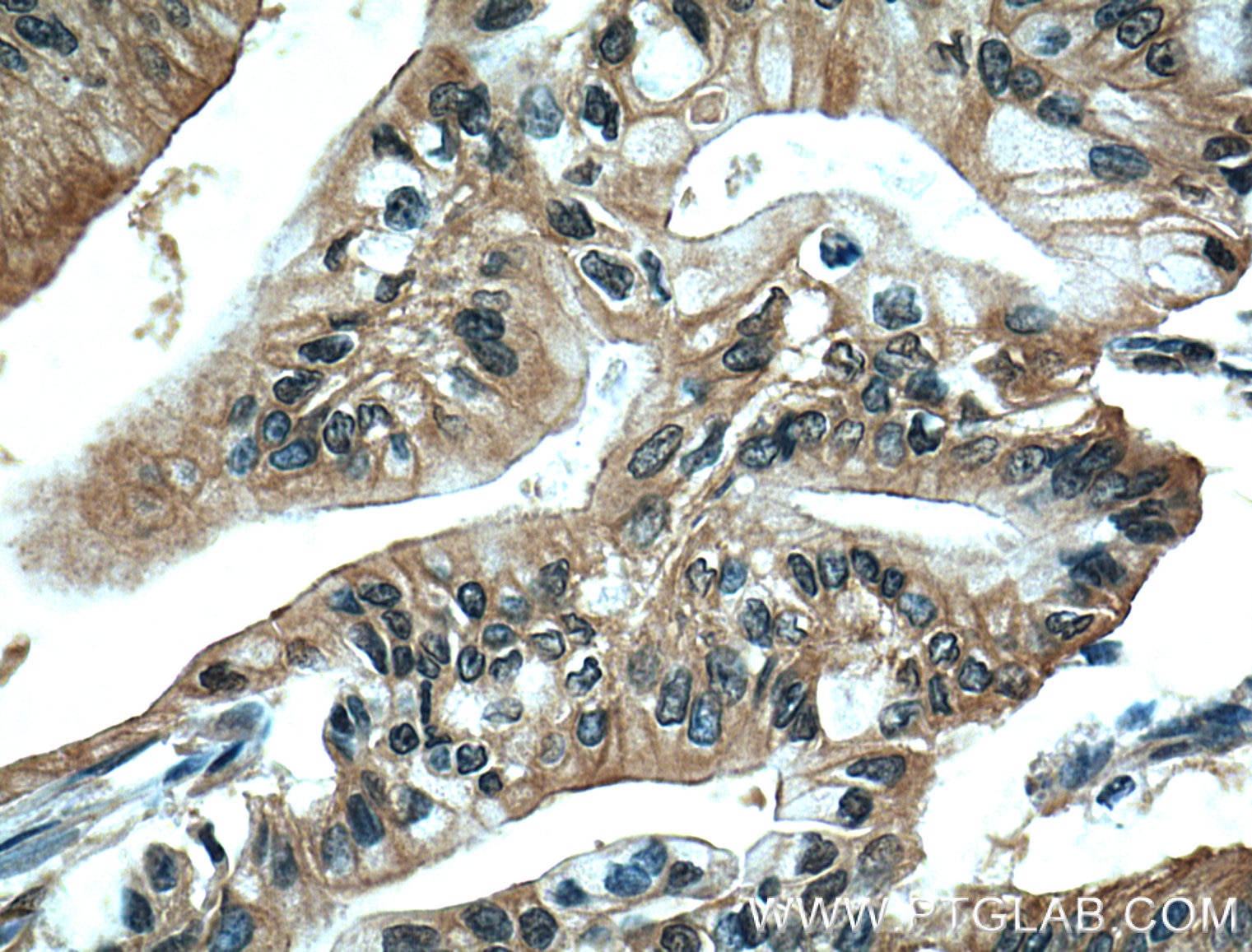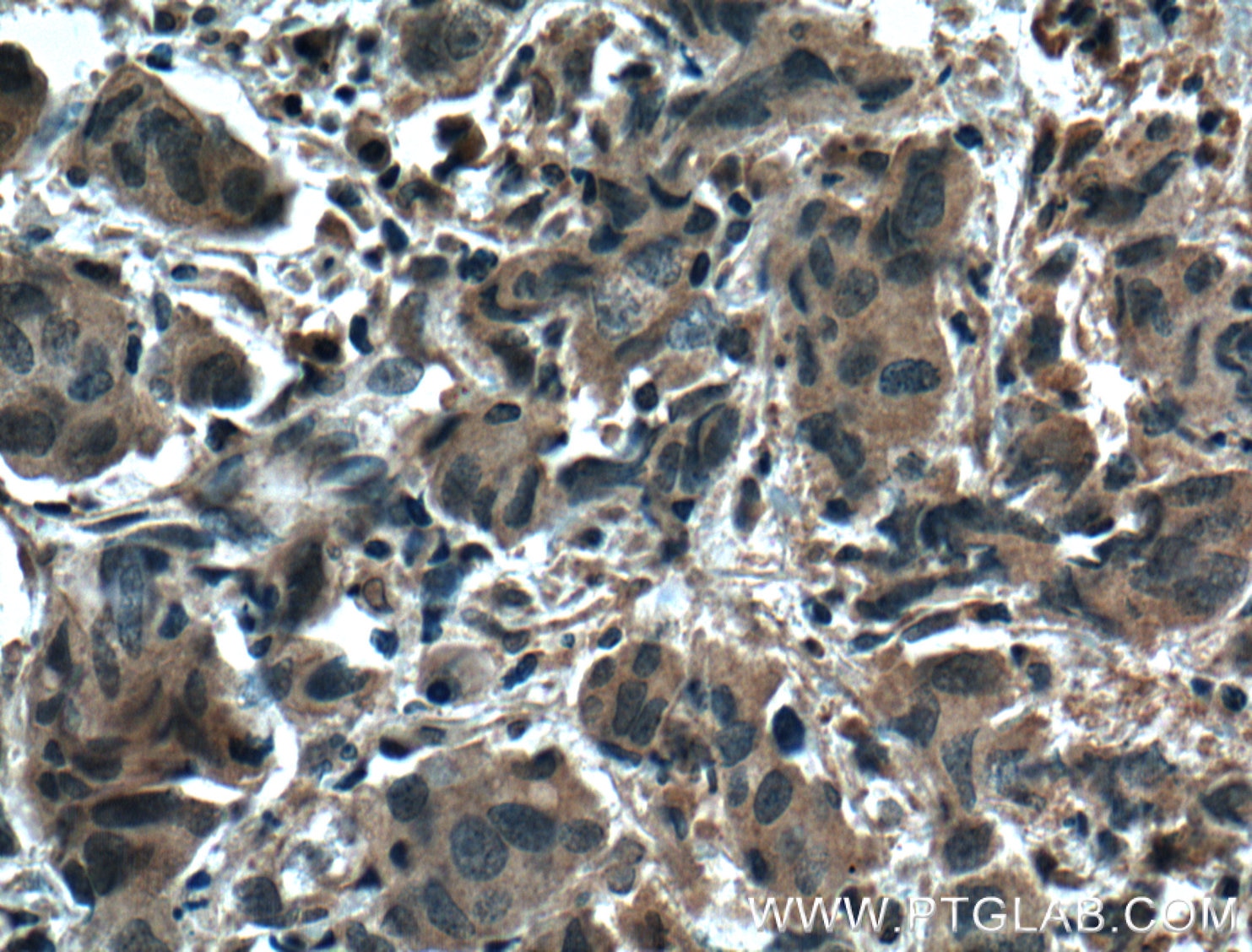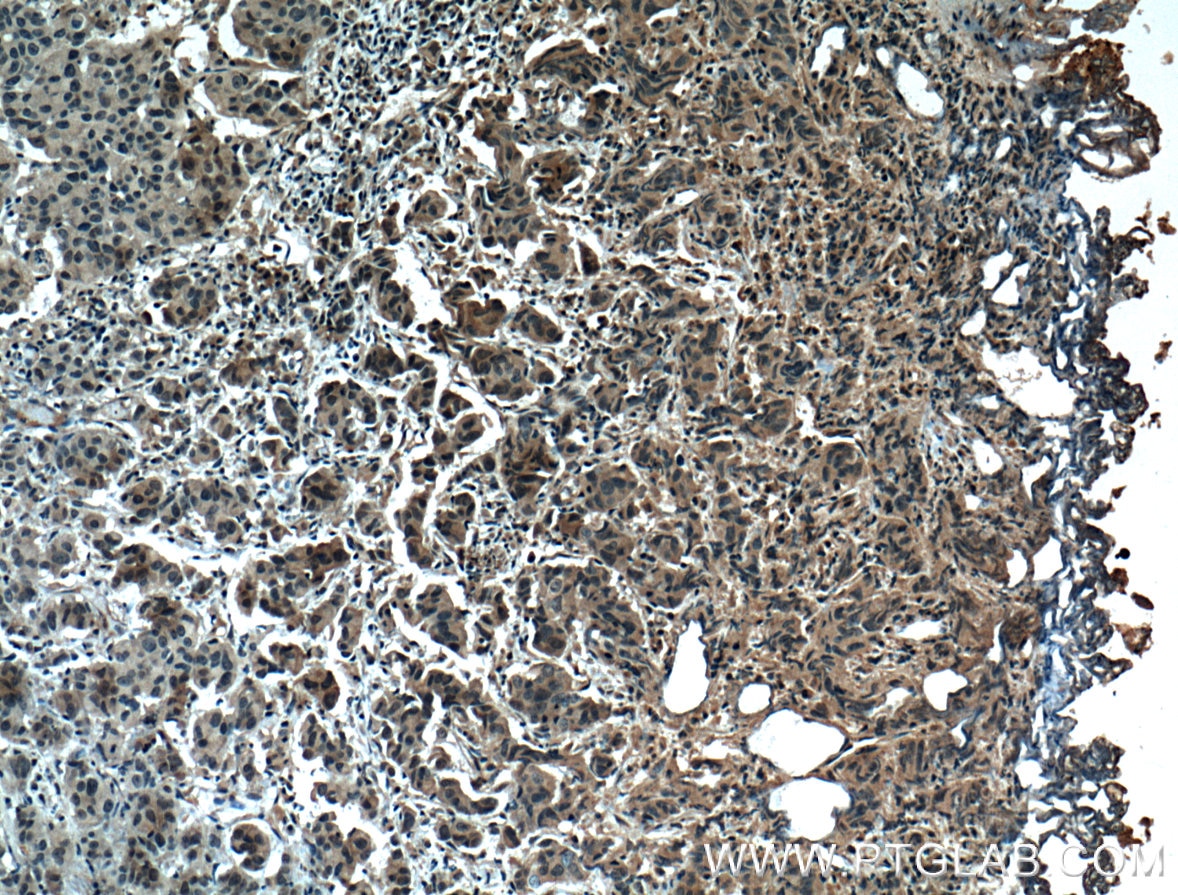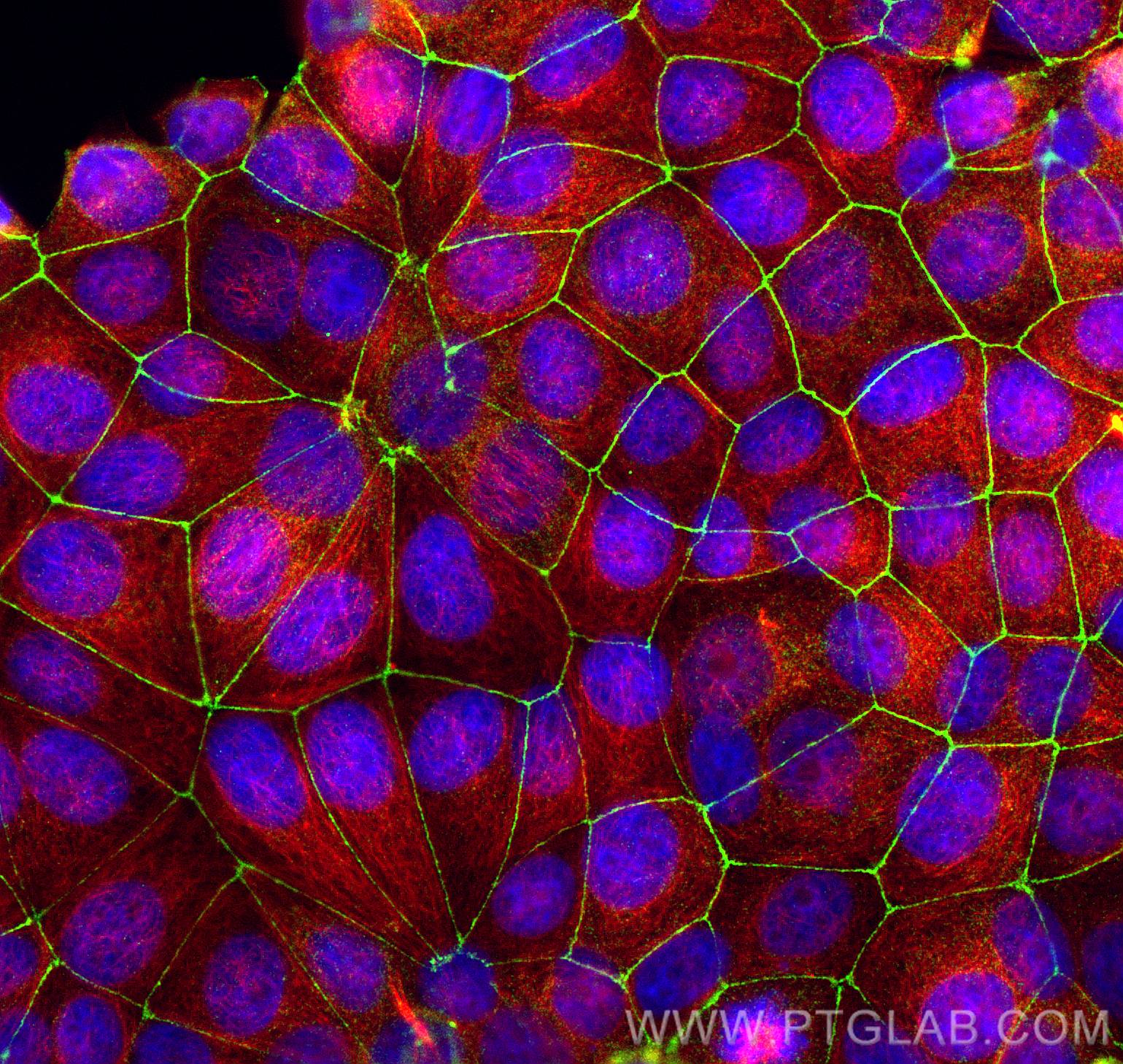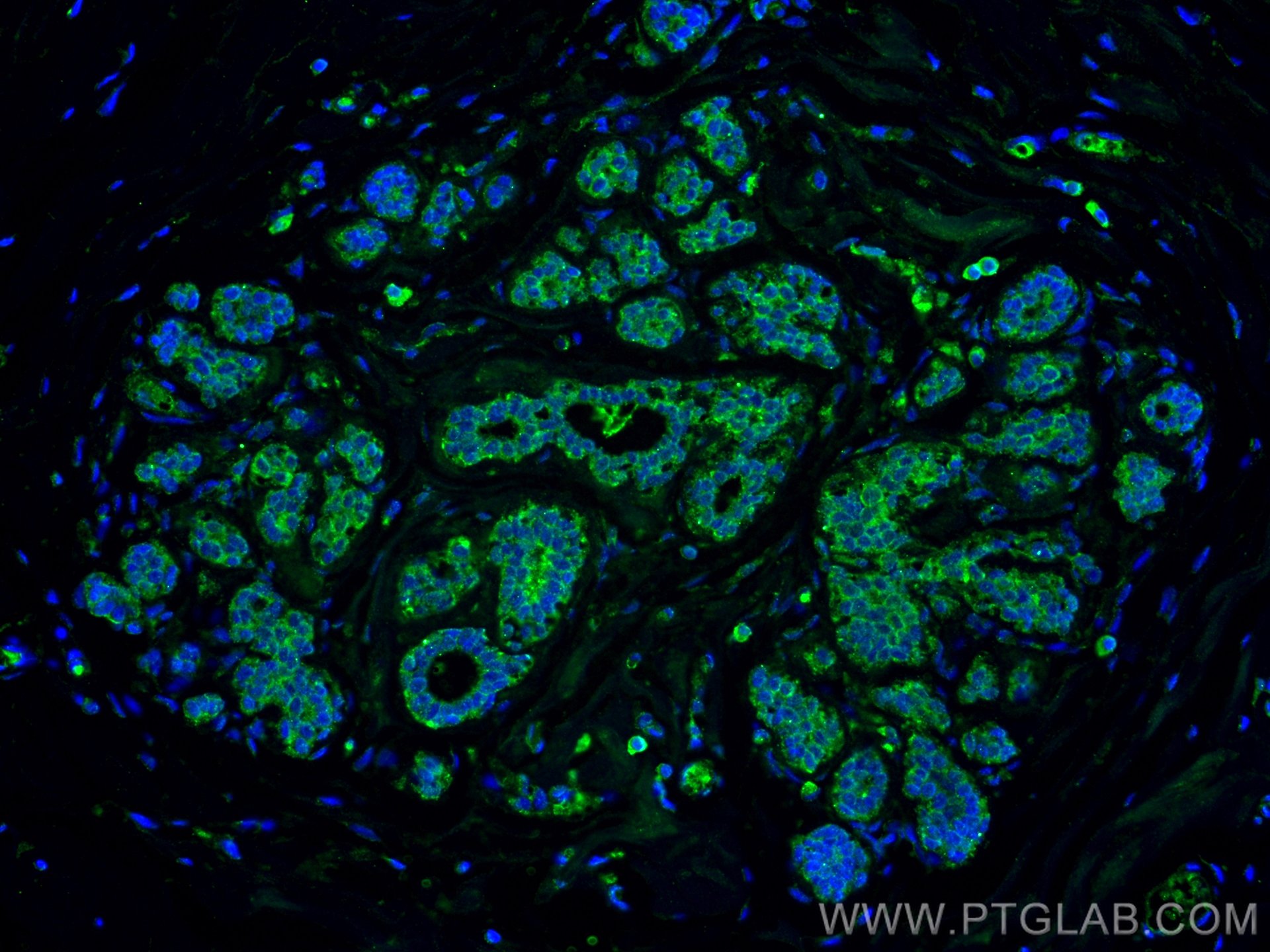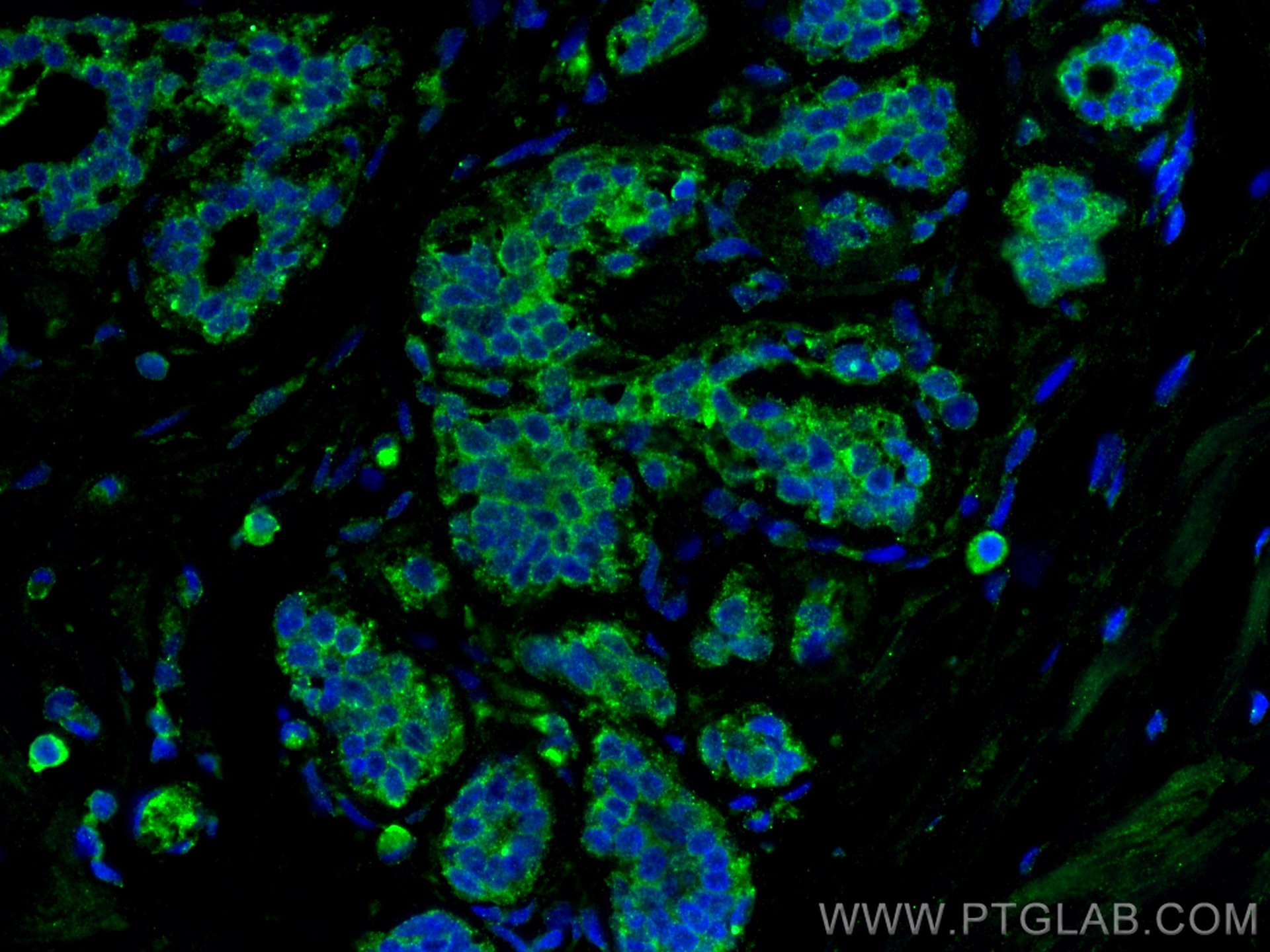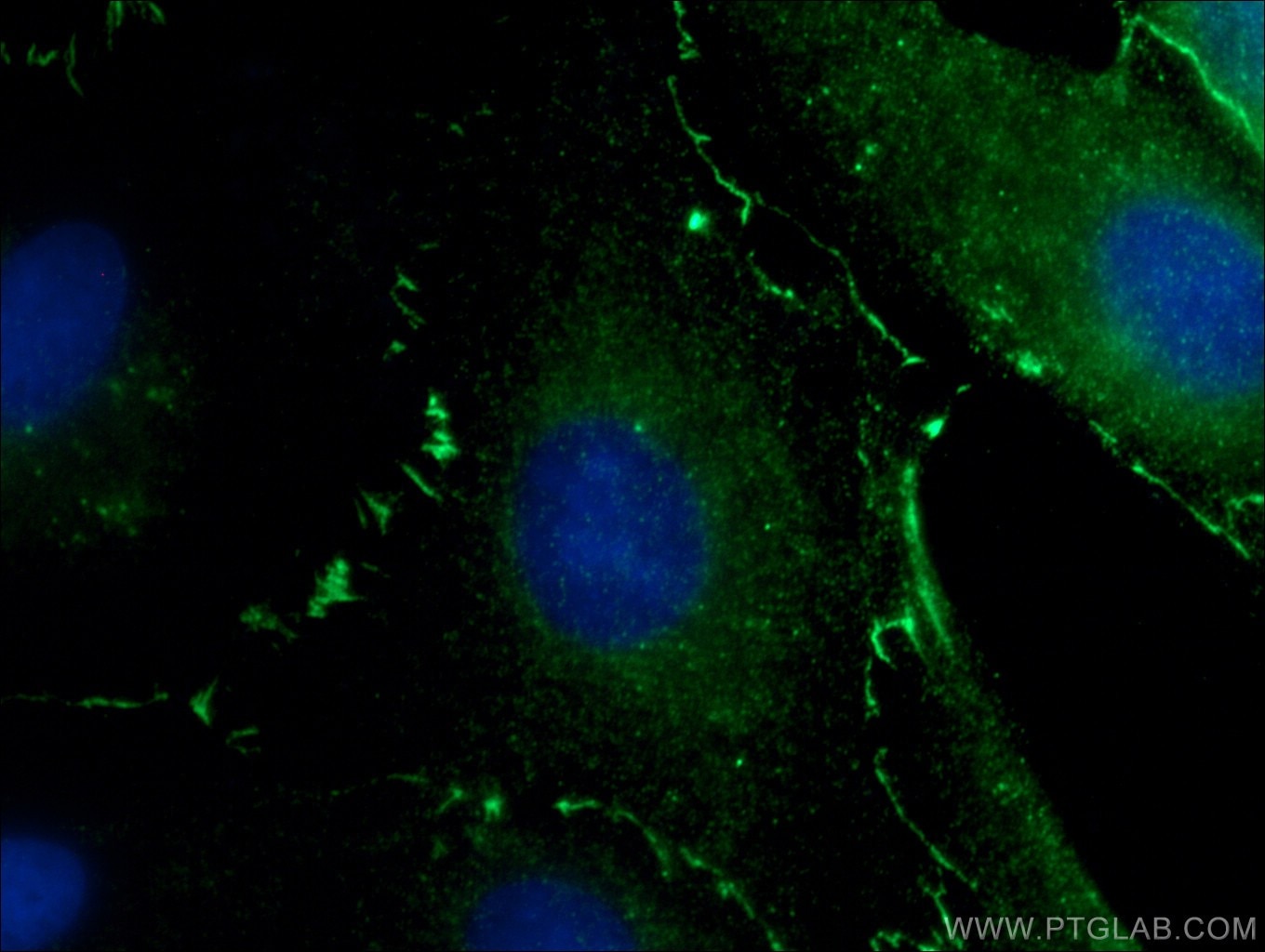- Featured Product
- KD/KO Validated
ZO-1 Monoklonaler Antikörper
ZO-1 Monoklonal Antikörper für IF, IHC, WB, ELISA
Wirt / Isotyp
Maus / IgG1
Getestete Reaktivität
human, Hund und mehr (1)
Anwendung
WB, IHC, IF, ELISA
Konjugation
Unkonjugiert
CloneNo.
1G4A1
Kat-Nr. : 66452-1-Ig
Synonyme
Galerie der Validierungsdaten
Geprüfte Anwendungen
| Erfolgreiche Detektion in WB | HUVEC-Zellen, A431-Zellen, COLO 320-Zellen, HEK-293-Zellen, HeLa-Zellen, HepG2-Zellen, LNCaP-Zellen |
| Erfolgreiche Detektion in IHC | humanes Pankreaskarzinomgewebe, humanes Prostatakarzinomgewebe Hinweis: Antigendemaskierung mit TE-Puffer pH 9,0 empfohlen. (*) Wahlweise kann die Antigendemaskierung auch mit Citratpuffer pH 6,0 erfolgen. |
| Erfolgreiche Detektion in IF | MCF-7-Zellen, humanes Mammakarzinomgewebe, MDCK-Zellen |
Empfohlene Verdünnung
| Anwendung | Verdünnung |
|---|---|
| Western Blot (WB) | WB : 1:1000-1:6000 |
| Immunhistochemie (IHC) | IHC : 1:200-1:800 |
| Immunfluoreszenz (IF) | IF : 1:750-1:3000 |
| It is recommended that this reagent should be titrated in each testing system to obtain optimal results. | |
| Sample-dependent, check data in validation data gallery | |
Veröffentlichte Anwendungen
| WB | See 27 publications below |
| IHC | See 9 publications below |
| IF | See 25 publications below |
Produktinformation
66452-1-Ig bindet in WB, IHC, IF, ELISA ZO-1 und zeigt Reaktivität mit human, Hund
| Getestete Reaktivität | human, Hund |
| In Publikationen genannte Reaktivität | human, Hausschwein |
| Wirt / Isotyp | Maus / IgG1 |
| Klonalität | Monoklonal |
| Typ | Antikörper |
| Immunogen | ZO-1 fusion protein Ag16454 |
| Vollständiger Name | tight junction protein 1 (zona occludens 1) |
| Berechnetes Molekulargewicht | 1748 aa, 195 kDa |
| Beobachtetes Molekulargewicht | 230 kDa |
| GenBank-Zugangsnummer | BC111712 |
| Gene symbol | TJP1 |
| Gene ID (NCBI) | 7082 |
| Konjugation | Unkonjugiert |
| Form | Liquid |
| Reinigungsmethode | Protein-A-Reinigung |
| Lagerungspuffer | PBS mit 0.02% Natriumazid und 50% Glycerin pH 7.3. |
| Lagerungsbedingungen | Bei -20°C lagern. Nach dem Versand ein Jahr lang stabil Aliquotieren ist bei -20oC Lagerung nicht notwendig. 20ul Größen enthalten 0,1% BSA. |
Hintergrundinformationen
Tight junction (or zonula occludens) form the continuous intercellular barrier between epithelial and endothelial cells, which is required to separate tissue spaces and regulate selective movement of solutes across the epithelium and endothelium (PMID: 20066090). ZO-1 (also known as TJP1) is a peripheral membrane phosphoprotein located on the cytoplasmic face and is expressed in tight junctions of both epithelial and endothelial cells (PMID: 3528172). It binds the transmembrane proteins occludin and the claudins linking them to cytoskeletal actin (PMID: 17418867). ZO-1 belongs to a family of multidomain proteins known as the membrane-associated guanylate kinase homologs (MAGUKs). It is a pivotal tight junction protein and may be involved in signalling mechanisms regulating cell proliferation and differentiation (PMID: 22782886).
Protokolle
| Produktspezifische Protokolle | |
|---|---|
| WB protocol for ZO-1 antibody 66452-1-Ig | Protokoll herunterladen |
| IHC protocol for ZO-1 antibody 66452-1-Ig | Protokoll herunterladen |
| IF protocol for ZO-1 antibody 66452-1-Ig | Protokoll herunterladen |
| Standard-Protokolle | |
|---|---|
| Klicken Sie hier, um unsere Standardprotokolle anzuzeigen |
Publikationen
| Species | Application | Title |
|---|---|---|
Sci Adv Astrocytic NDRG2-PPM1A interaction exacerbates blood-brain barrier disruption after subarachnoid hemorrhage | ||
Nat Commun An electrochemical biosensor for the detection of epithelial-mesenchymal transition. | ||
Cell Death Differ SARS-CoV-2 spike protein dictates syncytium-mediated lymphocyte elimination. | ||
ACS Appl Mater Interfaces Betaine-Based and Polyguanidine-Inserted Zwitterionic Micelle as a Promising Platform to Conquer the Intestinal Mucosal Barrier | ||
Int J Biol Macromol zwitterionic Pluronic analog-coated PLGA nanoparticles for oral insulin delivery | ||
Cell Mol Life Sci Silencing circSERPINE2 restrains mesenchymal stem cell senescence via the YBX3/PCNA/p21 axis |
